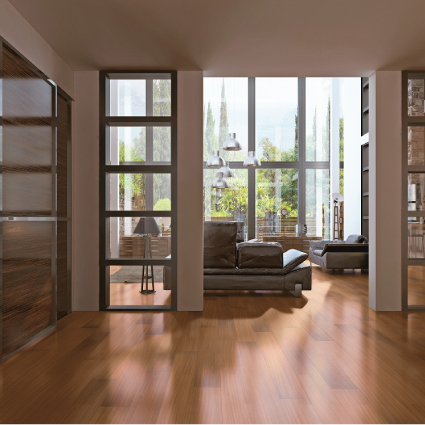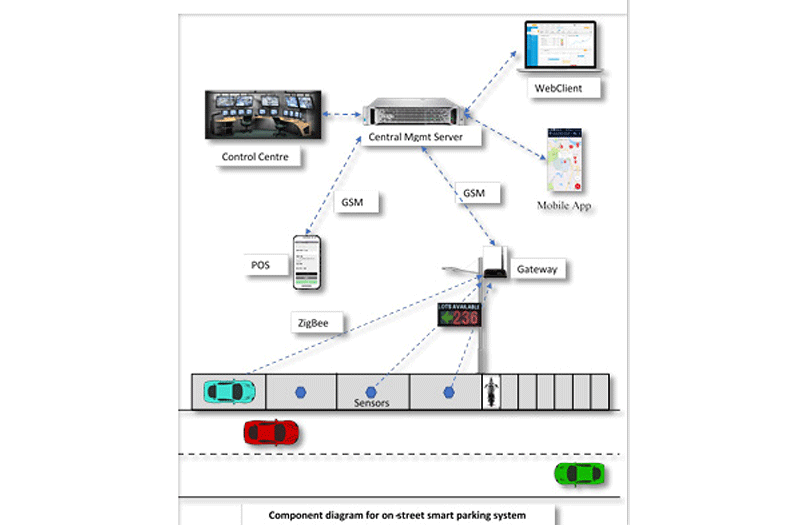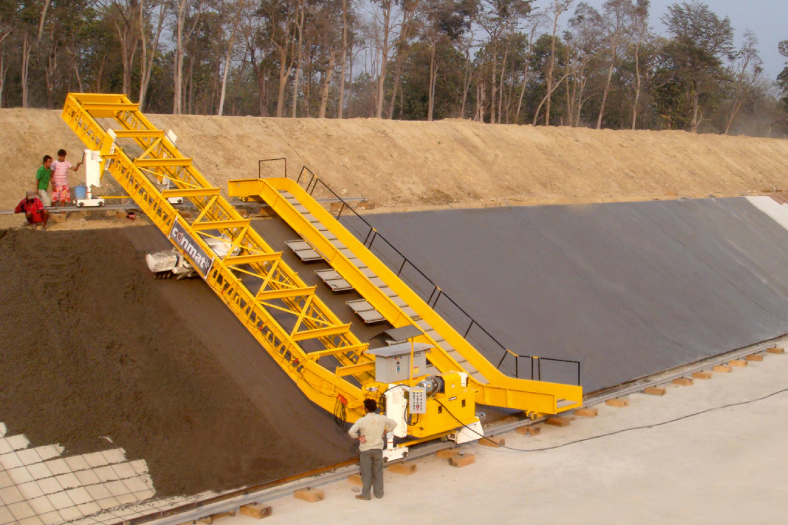Tips to choose and maintain wood floors

Explains some characteristics that are useful for choosing the right kind of wood flooring and how to maintain it
There are numerous options for flooring but one option that stands tall amongst others in terms of popularity and elegance is wood. Not all engineered floorings are made in the same way and can vastly differ in quality which makes a huge difference when it comes to their performance. The way a floor works ultimately depends upon the quality of the product. A cheap engineered wood flooring may give you a momentarily relief in terms of saved money, however, in the long run, leave you with nothing but regret. A well-thought out purchase gives you respite from all these worries.
There are several advantages of wood. It is very stable, abundantly grown and naturally available building material. It is easily handled and has a long life. Using technology to enhance its properties further has made wood a flooring material worth using in most environments. Wood offers choice as it can be stained and coloured or used in its natural form.
The variety is mind boggling as opposed to the limited choices in other materials such as stone, glass etc. Wood is temperature neutral allowing it to be used in most extreme cold climates where putting your barefoot on a marble floor at night would invite extreme discomfort at the least. The anti-slip treatment and a soft feel of the modern floating wood floor make the floors especially good for an aging population and even young children. Vinyl and composites are artificially made chemical products and the cheaper kinds are health hazards.
For a layman it is really hard to choose the right kind of wood. Here are some characteristics that are shared for choosing the right kind of wood flooring and how to maintain it.
How to choose the right kind of wood for your floors?
Modern technology has made it possible to use wood universally, irrespective of its origin. Good wood, in order to become useful, must undergo drying as wood when “green” has more than 50 per cent moisture. It cannot be used for making furniture or for flooring as it is. Where the flooring is to be used would decide the amount of final moisture in the planks. Dry extreme conditions demand the planks to have moisture between 7-8 per cent while hot humid conditions need the planks to have inherent moisture to be around 9 per cent.
What is my colour?
Dark colours in small rooms or in rooms with a lot of furniture would make the room even “smaller”. Use a medium colour wood as it would go with most decors – light or dark. Light stained floors, even pure white, are in vogue. Grey stained, dark black with golden veins, all have their takers.
What should be the finish of the wood – Gloss or Matt?
A smooth satin finish with a glossy look is easier to maintain while a lightly brushed open pore plank with matt finish would feel “woody” to the touch. Modern lacquer ensures that both planks remain clean and undamaged in regular use. A damp mop is all that is needed to keep them going good for years to come.
Thickness of veneer membrane to be kept in mind
Flooring with a 0.6 mm veneer would last about 10-12 years in a residential environment, but the planks would be short and narrow. Thicker veneers (up to 3mm) are usually drawn from older mature logs and thus show off the grains more prominently. The planks are longer, wider and the added advantage of the thick veneer is that it would last also longer!
Go for a prefinished or unfinished look heavy brushed “unfinished look” oak plank or a fully finished satin feel walnut. Modern engineered floors, like Mikasa, are fully finished at the factory with their layers of lacquer already dry and the planks ready to be locked in to each other.
Here are some easy ways to make your wood floors look new for a lifetime.
1. Consider replacing your floors
Enough products in the engineered flooring category exist today from veneer thickness starting from 0.6 mm going up to 6 mm. Customers who want to replace their flooring every ten years can install floors with veneers between 0.6 to 2 mm thick veneers. The thicker and bigger the planks are, the longer they last. They last for as long as 35-50 years and even beyond.
2. Hygiene of your wood floor
Wood floors are much more hygienic than other floorings like carpeted floors. Carpets tend to trap unpleasant stenches from pets, moistness from rains or things that have been spilt whereas wood floors are easier to clean. A simple brush or light vacuum keeps your wooden floors looking great. If dogs or children have dragged mud through the house a damp mop removes this muck with ease. Carpet owners at this stage would be devastated. But, those with wood floors need not break a sweat.
3. Take care of floors during rains
Position mats both outside and inside doors to reduce the entrance of dirt. In rainy weather, include a shoe removal area to avoid damage from water. Use rugs in areas where children play so that the toys do not scratch the floors. Prevent marks by using floor protectors like wheels or stoppers under furniture to avoid scratches and abrasions.
4. Regular cleaning
Cleaning with a normal vacuum cleaner works well. Do not use wet vacuum cleaning on the floor and ensure that the cleaner uses vertical rotating brushes. You can increase the speed of the cleaning process by dusting the floor first with a mop that has been treated with a dusting agent to pick up dust, dirt, and pet hair that might scratch the floor surface. For weekly or biweekly cleaning, vacuum with a floor-brush attachment on a vacuum cleaner or an electric broom. Do not use a vacuum with a beater bar attachment, which may scratch the wood flooring. For a quick dusting use the dusting cloths that are available easily in the market.
5. Taking care of stains
Stubborn stains that are due to dirt, oil and grime build up over time and are not completely removed by a weekly dust mopping. A damp cloth or a dry mop works better for this. For occasional deep cleaning, use a wood-cleaning product which is diluted according to the label instructions. Wet a sponge or rag mop in the water, and then wring it almost dry so it feels only slightly damp to the touch. Damp-mop the floor and be careful that there is no standing water residue remaining. Rinse with a clean mop dampened in clear water, but only if the cleaning product requires it. Wipe up any excess liquid because standing water can damage wood surfaces. If the weather is humid, operate a ceiling fan to speed up drying.
Consider the floor’s finish before trying to remove the mark. If the stain is on the surface, the floor probably has a hard finish, such as urethane. If the stain has penetrated through to the wood, the floor probably has a soft oiled finish — common in older homes whose floors have not been refinished and resealed. Wipe surface stains from a hard finish with a soft, clean cloth. Never use sandpaper, steel wool, or harsh chemicals on such a surface because they can permanently damage the finish.
6. Proper installation
Last but not the least is the importance of proper installation. Proper installation ensures that the product is easy to maintain in the long-run. Therefore, it is quite important to have well-trained people to do proper installation as well as to make sure that the floor is kept well.
Authored by__
Anil Tyagi, Business Head for Brand Mikasa, Greenlam Industries Ltd. Brand Mikasa, engineered floors are being produced in India for the first time at its fully integrated plant at Behror, Rajasthan.
Cookie Consent
We use cookies to personalize your experience. By continuing to visit this website you agree to our Terms & Conditions, Privacy Policy and Cookie Policy.









